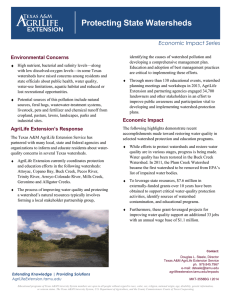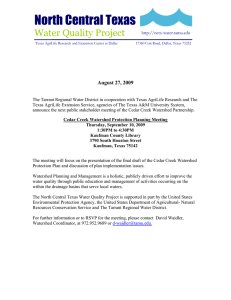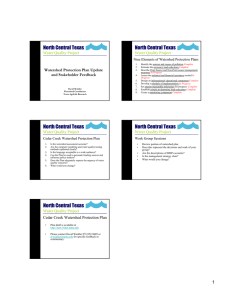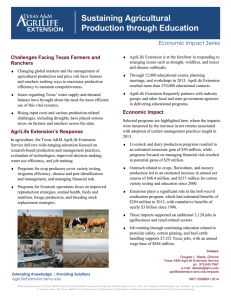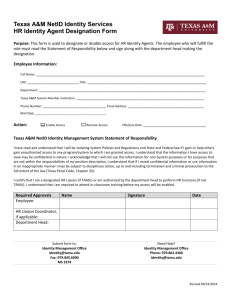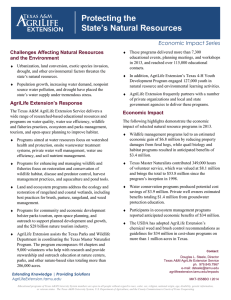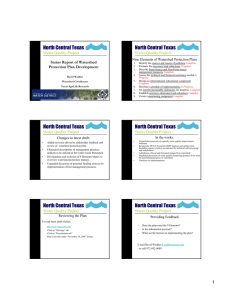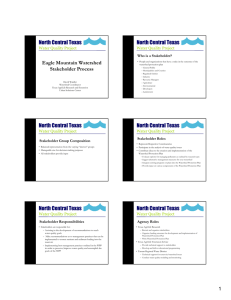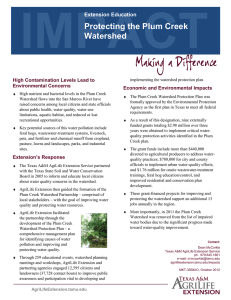Water Use Efficiency and Quality Economic and Environmental Impact
advertisement
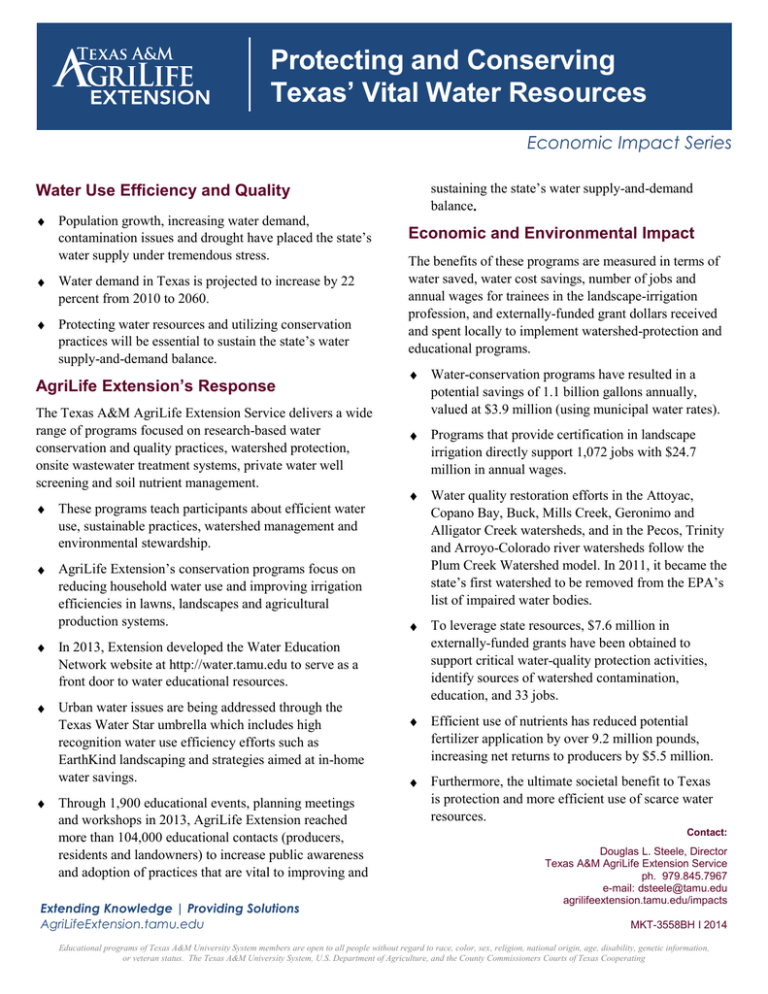
Protecting and Conserving Texas’ Vital Water Resources Economic Impact Series Water Use Efficiency and Quality Population growth, increasing water demand, contamination issues and drought have placed the state’s water supply under tremendous stress. Water demand in Texas is projected to increase by 22 percent from 2010 to 2060. Protecting water resources and utilizing conservation practices will be essential to sustain the state’s water supply-and-demand balance. AgriLife Extension’s Response The Texas A&M AgriLife Extension Service delivers a wide range of programs focused on research-based water conservation and quality practices, watershed protection, onsite wastewater treatment systems, private water well screening and soil nutrient management. These programs teach participants about efficient water use, sustainable practices, watershed management and environmental stewardship. AgriLife Extension’s conservation programs focus on reducing household water use and improving irrigation efficiencies in lawns, landscapes and agricultural production systems. In 2013, Extension developed the Water Education Network website at http://water.tamu.edu to serve as a front door to water educational resources. Urban water issues are being addressed through the Texas Water Star umbrella which includes high recognition water use efficiency efforts such as EarthKind landscaping and strategies aimed at in-home water savings. Through 1,900 educational events, planning meetings and workshops in 2013, AgriLife Extension reached more than 104,000 educational contacts (producers, residents and landowners) to increase public awareness and adoption of practices that are vital to improving and Extending Knowledge | Providing Solutions AgriLifeExtension.tamu.edu sustaining the state’s water supply-and-demand balance. Economic and Environmental Impact The benefits of these programs are measured in terms of water saved, water cost savings, number of jobs and annual wages for trainees in the landscape-irrigation profession, and externally-funded grant dollars received and spent locally to implement watershed-protection and educational programs. Water-conservation programs have resulted in a potential savings of 1.1 billion gallons annually, valued at $3.9 million (using municipal water rates). Programs that provide certification in landscape irrigation directly support 1,072 jobs with $24.7 million in annual wages. Water quality restoration efforts in the Attoyac, Copano Bay, Buck, Mills Creek, Geronimo and Alligator Creek watersheds, and in the Pecos, Trinity and Arroyo-Colorado river watersheds follow the Plum Creek Watershed model. In 2011, it became the state’s first watershed to be removed from the EPA’s list of impaired water bodies. To leverage state resources, $7.6 million in externally-funded grants have been obtained to support critical water-quality protection activities, identify sources of watershed contamination, education, and 33 jobs. Efficient use of nutrients has reduced potential fertilizer application by over 9.2 million pounds, increasing net returns to producers by $5.5 million. Furthermore, the ultimate societal benefit to Texas is protection and more efficient use of scarce water resources. Contact: Douglas L. Steele, Director Texas A&M AgriLife Extension Service ph. 979.845.7967 e-mail: dsteele@tamu.edu agrilifeextension.tamu.edu/impacts MKT-3558BH I 2014 Educational programs of Texas A&M University System members are open to all people without regard to race, color, sex, religion, national origin, age, disability, genetic information, or veteran status. The Texas A&M University System, U.S. Department of Agriculture, and the County Commissioners Courts of Texas Cooperating
